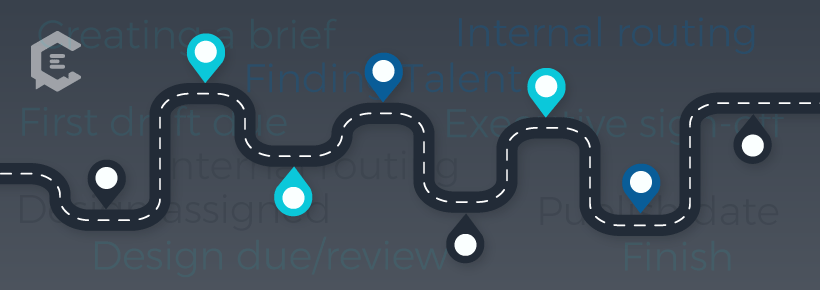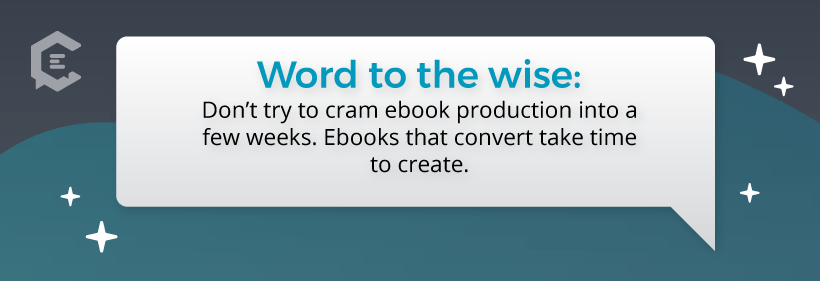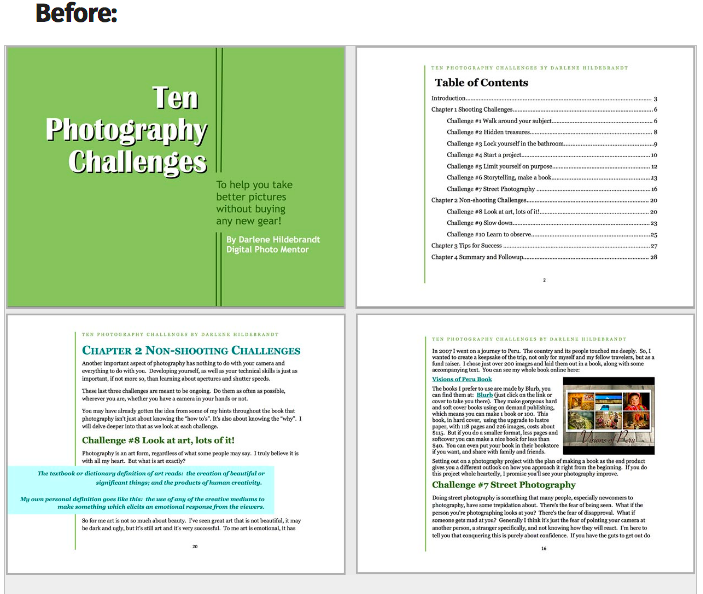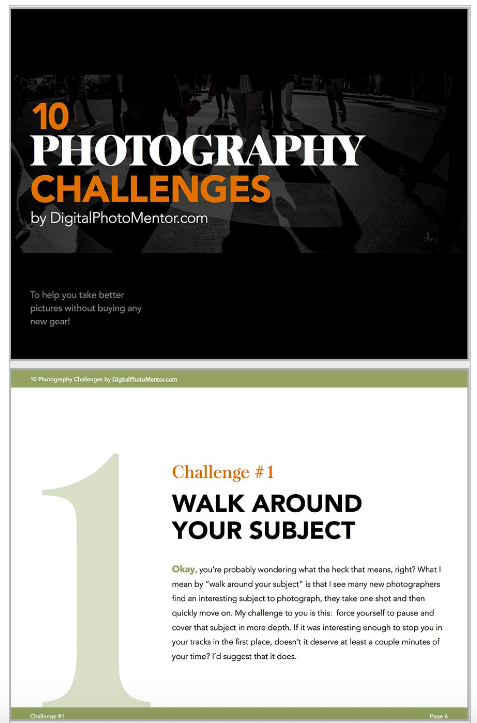We described the value of long-form content in previous posts highlighting how they can educate, inform, inspire, and convert prospective customers with in-depth, high-word-count detail.
“Ebooks allow you to share expertise in a downloadable, digestible way, showing that you’re a resource and authority,” notes writer Emma Siemasko of CrazyEgg. The main M.O. of publishing ebooks is to reinforce information-seeking behavior. Potential customers — both B2B and B2C — use them as an external source of information. If done well, a brand can successfully lead a prospect down the persuasion slide by reinforcing why they should be chosen over the competition.
Unlike a traditional 500- to 700-word blog post, ebooks require more sweat. However, the effort is well worth it.
You may dread the seemingly exhaustive future effort of creating an ebook, but take note of the steps listed below and be well on your way to revealing subject-matter prowess and turning readers into customers:
Step 1: Define goals.
Ebook creation is not a small task. You can’t produce it as quickly as a short-form social post or blog post. Because it takes resources and time to perfect, you must start the process by defining goals; otherwise, it’s a wasted effort.
Goals are not abstract ideas: They help define a path, clarify priorities, and quantify success. Beyond this, goals help align and focus all ebook contributors to one universal mission by providing a better understanding and creating a unified vision.
Think about why you want to invest time and resources into creating an ebook. What do you want to achieve? There are a number of goals you could meet with producing this type of content. Creating goals enables your team to target key performance indicators, like:
- Brand awareness — measured through brand mentions and sentiment analysis
- Engagement — measured through social shares and blog comments
- Lead generation — measured through visit depth and assisted conversions
- Loyalty — measured through assisted conversions of repeat buyers
Step 2: Define a destination.
Where will your ebook live? As a dedicated resources area within your website or a white box pop-up on your homepage? The final destination will help writers better understand the intended voice, so it’s important to define its home.
Then, decide if you want your ebook to be gated or non-gated. Look to the previous post we did in this series on mastering creative briefs for a robust definition of the two.
Step 3: Identify a topic.
Don’t be in marketing La-La Land when selecting an ebook topic. Make sure the subject chosen mirrors your goals and is of interest to your target demographic.
Looking for some inspiration? Here are common ebook topics:
- Current industry problems/trends: Start with a description of issues and trends in the industry, and then discuss specific solutions.
- Technology: Describing technology and processes.
- How something works: A step-by-step guide to something.
- How to choose a product/solution in X industry: Explain the steps involved in making a purchasing decision.
- Keywords: What are people “Googling” information about in your industry?
- Existing performance: Do you have a shining-star blog post? Think about making an ebook out of it.
Remember, most readers need to be educated before becoming a customer or taking the next step down the customer lifecycle. Make sure you set a clear expectation that you want the content to educate, not sell. Your content asset shouldn’t be a blinking flashing advertisement for your brand. It should inform your readers about a particular subject related to your business.
Step 4: Source the best talent.
Who will do what? Assign the top talent to write and design the ebook. You can either look internally to write the guide or hire freelance ebook writers. Quality should be your main prerogative, so invest in the best. (Remember freelancer rates and quality are correlated!)
Sometimes it’s best to hire a subject matter expert, someone who has the time to create a remarkable content asset that can be capitalized on for years to come. If your internal team is not up for the task, there are abundant expert freelancers eager to tackle the project.
Step 5: Develop a timeline.
Make sure you set realistic timelines. Consider padding in time for the following:
- Creating a brief
- Finding talent
- First draft due date/review
- Second draft due/review
- Internal routing
- Design assigned
- Design due / review
- Internal routing
- Executive sign-off
- Publish
It’s better to set realistic timelines than fast, 24-hour turnaround ones. Space the above tasks out by weeks, not hours or days, to make sure all parties have the time to perform quality work. From end-to-end an ebook can take anywhere from a few weeks to a year to complete.
Step 6: Create a brief chock full of meaty details.
Make sure you paint a full picture of what you’re looking for by answering the five W’s within the brief:
- Who (target audience)
- What (topic, sub-topics, and details to consider)
- Where (where the content will live)
- When (first/second draft due dates and publish date)
- Why (the primary goals of the ebook, with a call-to-action that reflects the goals)
Then, send the creative brief to the assigned writer(s). Need extra guidance on writing a long-form content asset brief? Refer to this post with a step-by-step guide on writing a brief for major content assets.
Step 7: Make it pretty.
Ebook design should never be an afterthought. Ebook design is as mission critical as the text. “A good design communicates credibility and bestows confidence in your work,” notes Shutterstock.
Once you have your copy in good shape (it can take a few rounds of revisions and internal routing), it’s now time to beautify it. Check out this before and after from Fizzle.co:
BEFORE:
AFTER:
The design should consider all of these elements:
- Visual branding
- Overall navigation
- Front/back cover
- Font selection
- Callouts or text features
- Color scheme
- Section layout
- Visual elements, including graphs, graphics, pictures, vectors, infographics, and more
- Conversion mechanisms, like buttons, sign-up forms, and social sharing options
Make sure to design your ebook with conversions in mind. Placement, layout, color, and font are all critical pieces of the conversion process with ebooks; and call-to-action buttons should be clearly spotted.
Step 8: Publish and promote!
Once perfected, it’s time to publish the ebook. However, your content means nothing until it reaches critical mass, so come up with a plan to promote the content in the right channels for your target audience.
We won’t leave you to the wolves on this step. The next part of the series offers in-depth details on how to promote an ebook or long-form content asset. Tune in to the ClearVoice blog next week!
Ready to start creating a remarkable ebook or content asset? The time is now to hire the right freelancers for your project.













